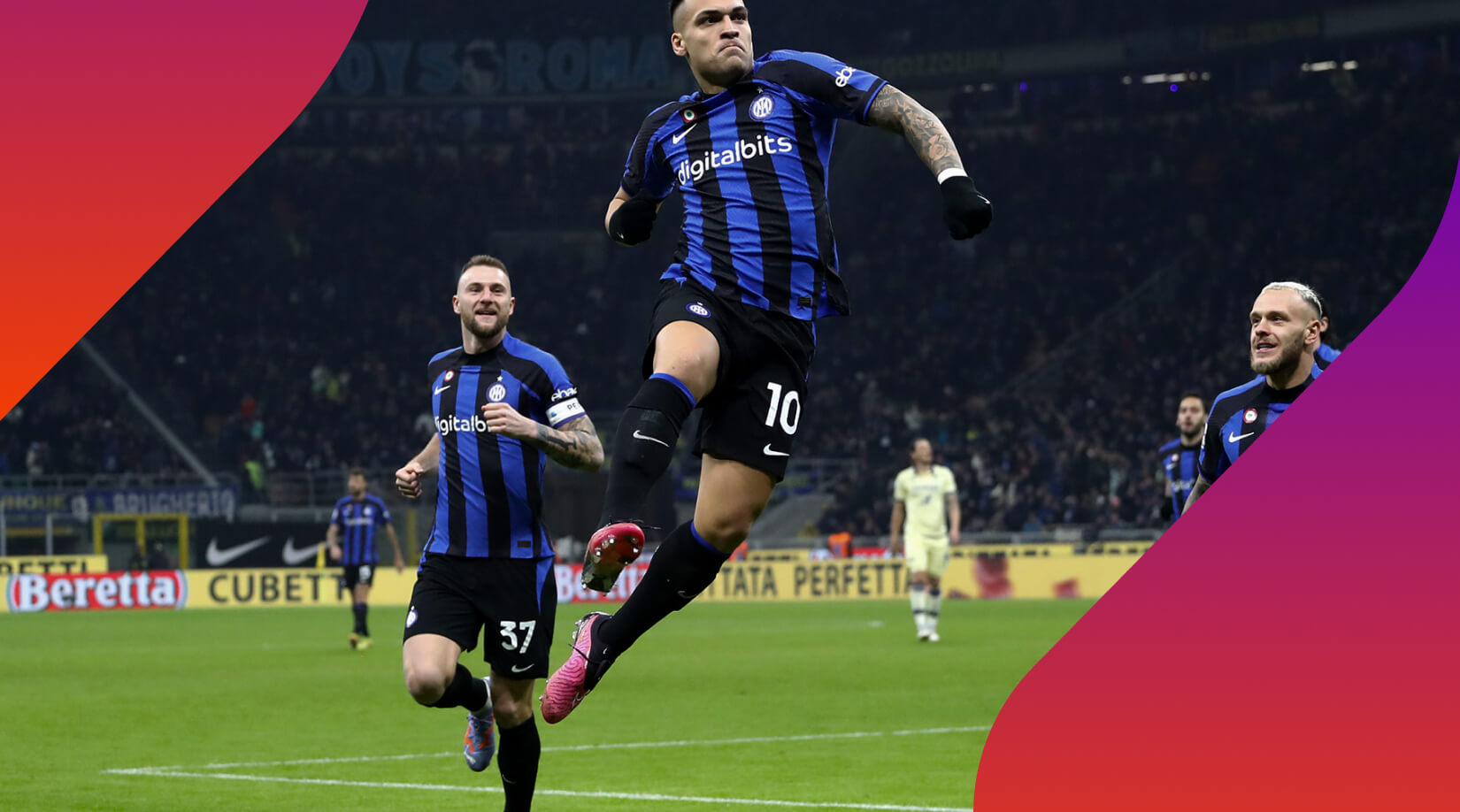Inzaghi’s Tactical Masterclass
Inter Milan this, Inter Milan that: Everyone has heard of the Nerazzurri since last season. This season, they’re the leaders of Italy, boasting a lead that stretches well into the double digits. This leads many to wonder – what is the catalyst behind their rise?
Last season, Napoli was banging in Italy but eventually stumbled in the Champions League. The same cannot be said about Inter Milan, who secured a pivotal victory at home against Atlético de Madrid (1-0), a major step in reaching the quarterfinals. In Serie A, it’s been months since anyone could even dream of upsetting Inter Milan – but why?
Inter Milan is led by Simone Inzaghi, who manages to get the best out of the squad. Having understood that this team is built for counter-attacking soccer, the Italian set up his wing-backs (Denzel Dumfries, Di Marco, and Darmian) as attacking outlets that run in behind defenders (their blindspot), making it very difficult for teams to contain Inter’s well-coordinated attacks.
Inter has often used this as a starting point – using everyone’s strengths. The acquisition of Benjamin Pavard further solidifies Inter’s defensive setup. He contributes to a formation that, while seemingly a traditional 5-3-2 block, is anything but passive.
Read more: Newcastle vs Milan Prediction, Odds and Betting Tips 13/12/2023
What makes this team particular is how it aggressively ‘jumps’ at ball carriers despite the general shape of the team remaining in a mid-block.
Adapting Tactics for European Success
As a Swiss knife, Inter Milan transforms based on the competition it faces. The Inter that competes in Serie A radically differs from the team European fans will see in the Champions League.
In Italy, Inzaghi prefers a 50:50 match. What does that entail? Open soccer with high-scoring encounters (4-2 vs Roma, 4-0 vs Atalanta, 3-0 vs Lazio) while providing a chance to the other team – adopting a more balanced game that plays to their athletic strengths.
All of this makes sense, but if they were to attempt this in Europe, English teams would rapidly crush them. Fans saw a glimpse last season of how Inter adapts to European competitions, notably in the final against Pep’s Manchester City, the eventual winners (1-0).
Generally, Inter lowers its expected goals (xG) in Europe and there are good reasons for it: Inter prefers to give the ball to the opponent, build up their 5-3-2 fortress and wait for the perfect opportunity.
Read more: Manchester United vs Newcastle United Prediction, Betting Tips and Odds
Soccer, especially in the Champions League, is a battle of critical moments – the team that capitalizes on these opportunities secures the win. Curtailing these moments for their opponents while meticulously planning their own has made Inter Milan one of the most frustrating teams to play against.
Inter’s Offensive Powerhouse: Lautaro and Thuram
The dynamic forward partnership of the Argentinian Lautaro Martínez and Frenchman Marcus Thuram, one of the best duos in Europe, also contributes to Inter Milan’s offensive power.
Lautaro could never impose himself in a single-striker system. However, when playing in a duo with a suitable partner, any coach can easily expect double figures in goals and assists.
With his mobility and knack for finding the net, Thuram complements Lautaro perfectly.
Thuram engages defenders across the pitch while also netting some goals himself.
Midfield Maestros: The Core of Inter’s Strategy
Inzaghi usually fields a midfield with Barella, Çalhanoğlu and Mkhitaryan, which offers tactical flexibility and strength.
Barella, in particular, has stood out as Italy’s best midfielder without any close competition in recent years. He’s everywhere, but he most often becomes a second-phase midfielder who transforms defence into attack. He even offers help to the back three when in trouble, but he primarily orchestrates moves from the midfield’s core.
Read more: Atlético de Madrid vs Inter Milan, Prediction, Odds and Betting Tips 13/03/2024
With Çalhanoğlu, he has a partner to eternally combine with while dismantling opposing defences. And that’s a major reason for Inter’s success – with Çalhanoğlu, Inter have a player who often finds himself in advanced positions and facilitates fluid transitions.
The Collective Vision
So, what makes Inter so good? Without a doubt, it is the collective vision spearheaded by Simeone Inzaghi. Recognizing an elite coach’s hallmark lies in his ability to inflate the worth of players. And I don’t mean this in the financial way but purely in how players seem better than they actually are.
Read more: Inter Milan vs Atlético de Madrid, Prediction, Odds and Betting Tips 20/02/2024
Players like Dumfries and Lautaro exemplify this. They’re great players, but they wouldn’t have the same status elsewhere. And yet, it does not matter because soccer is a team sport above all.
Inzaghi’s pragmatism in acknowledging the squad’s limitations and adapting strategies accordingly is a testament to his coaching skills. This ability to set aside ego and tailor tactics for varied competitions is a rare trait, one that sets great teams apart.
Inter’s Tactical Fluidity
Any great team is different and Inzaghi has also ticked that box. In Italy, Inter Milan understood there is no harm in keeping possession and forcing the opponent back. Just like in Europe, Inter is comfortable just using its counter-attacking powers instead while relying on only a few chances.
It seems counterintuitive at first glance, but Inter Milan has proven it has worked out for them in the past years. When it lasts for so long, it indicates that this is not luck but a well-honed methodology.
Read more: Inter vs Juventus Prediction, Odds and Betting Tips 04/02/2024
Most people would have never expected Inter Milan to compete with Europe’s best. However, they defied expectations in the game against Pep’s Manchester City, in which the Italians looked more solid than other European giants, including Real Madrid.
It speaks volumes that, although it might seem like they’re just edging it in Europe, they’re fully committed and among the toughest teams one can face – because of how quickly they can adapt.
More analytics on soccer:
- Rodri, A Metronome Inside Manchester City’s Machine
- Girona: La Liga’s New Surprise Mystery Uncovered
- The Curious Cases of Barcelona, Manchester United and Chelsea
- Xavi Hernández, The Fallen Angel
- Leverkusen and Xabi Alonso: Love At First Sight
- Why is Thomas Tuchel not succeeding at Bayern Munich?





 Kai Edvard Iliev
Kai Edvard Iliev